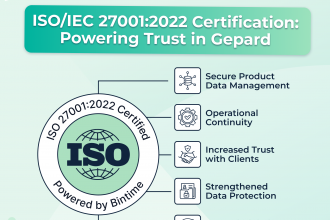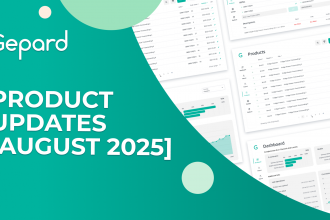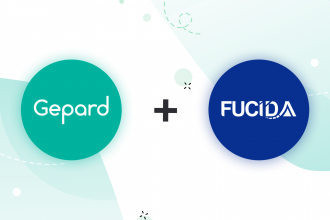Gepard PIM: May 2025 Product Demo Recap
At Gepard PIM, we’re committed to constantly refining your experience, and our latest sprint was no exception. Here’s a breakdown of the key enhancements we demonstrated on our May product demo – alongside what each means for you, our valued users.
1. Streamlined Product Import with Real-Time Progress
What’s New:
- Import Stages Visibility: You can now see each stage of an import – percentage complete, current phase, and any bottlenecks.
- Observability Improvements: Detailed error notifications pinpoint exactly which entity failed during a PDF-based import, without halting the product creation process.
What does it mean for Gepard PIM Users?
You’ll spend less time guessing why an import stalled or failed. With real-time progress and precise error alerts, troubleshooting is faster, imports are more transparent, and you can keep your catalog flowing smoothly.
2. Enhanced PDF-to-Product Creation
What’s New:
- Entity Count Display: When extracting product data from PDFs, you now see exactly how many attribute values were recognized.
- Compact Table Views: If few entities are detected, the footer of the table is hidden for a cleaner interface.
- Resilient Entity Handling: If an entity fails to parse, the product still gets created – minus that singular problematic field – so you can correct it later.
What does it mean for Gepard PIM Users?
Tackling catalogs via PDF is more reliable. You’ll know at a glance how many data points imported successfully, spot missing or malformed values, and keep your workflow moving without a full stop when there’s a minor snag.
3. Smarter Media Management in Product Galleries
What’s New:
- Image-Type Tooltip: Hover over thumbnails to see whether an image is a product shot, lifestyle image, spec sheet, etc.
- Drag-and-Drop Reordering: Effortlessly rearrange gallery images by dragging. Your first-positioned image automatically becomes the main product image.
- Faster Image Swaps: Underlying component fixes ensure instant updates when you replace an image.
What does it mean for Gepard PIM Users?
Visual storytelling is essential. Now you can organize your product visuals with ease, ensuring the most compelling image is front-and-center. Faster swaps mean less waiting and more focus on choosing the perfect shot.
4. In-Context Attribute Creation
What’s New:
- On-the-Fly Attribute Setup: While assigning imports, you can create new attributes directly within the modal—no need to navigate away.
- Seamless Assignment Workflow: New attributes appear immediately in your list, ready for mapping or enrichment.
What does it mean for Gepard PIM Users?
Maintain momentum. If you realize mid-import that you need a new attribute (e.g., “Battery Life” or “Color Variant”), just add it in place, no tedious context-switching.
5. Next-Gen Data Pipeline Builder (Beta Preview)
What’s New:
- Visual Flow Designer: Drag nodes onto a canvas, connect enrichment sources, destinations (exports or connectors), and configure each step via a handy side panel.
- Mini-Map & Zoom Controls: Navigate complex pipelines with an overview map, zoom in/out, and auto-center features.
- Lock & Full-Screen Modes: Prevent accidental edits or focus entirely on your layout in presentation mode.
What does it mean for Gepard PIM Users?
Crafting a data pipeline is now as intuitive as flowcharting. You get a clear visual of your entire import-enrich-export sequence, making it simpler to onboard new marketplaces, connectors, or custom export routines.
6. Bolstered Security and Infrastructure Resilience
What’s New:
- DigitalOcean S3 Token Management: Scoped, per-bucket tokens replace blanket-access keys.
- Redis Fallback Handling: If Redis is unavailable, runtime data gracefully fails over without crashing the app.
- Delta Export Optimization: Only products that actually changed since the last export are processed, massive time savings on recurring exports.
What does it mean for Gepard PIM Users?
Your data pipeline is more secure and robust. Scoped tokens reduce risk, cache fallbacks keep the UI live even under duress, and delta exports ensure you’re only syncing what’s new – no more day-long re-exports.
7. AI-Driven Data Extraction & Variants Recognition
What’s New:
- Improved Prompts & Tuning: System and context prompts have been optimized to reduce token usage by up to 40%, speeding up automated mapping jobs.
- Accessory & Variant Detection: The AI now correctly identifies multiple variants (e.g., “Chrome” vs. “Silver”) and accessory lists within product descriptions.
- Security-Policy Safeguards: Malicious or malformed prompt attempts are caught and logged with clear messages like “Input attempts to manipulate extraction rules.”
What does it mean for Gepard PIM Users?
Rely on smarter, faster AI to auto-map your attributes, detect product variants, and guard against bad data or security threats. You’ll see fewer manual fixes and more trust in our automated workflows.
Looking Ahead
We demoed a lot of ground, and we’re already working on the next wave: deeper observability dashboards, advanced connector enhancements (Shopify, custom APIs), enriched role-based access controls, and wider language support in our AI agent. Stay tuned for the next sprint, and as always, your feedback shapes our roadmap.
Thank you for joining our latest demo and for being part of the Gepard PIM community. Let’s continue to streamline product data management together!





